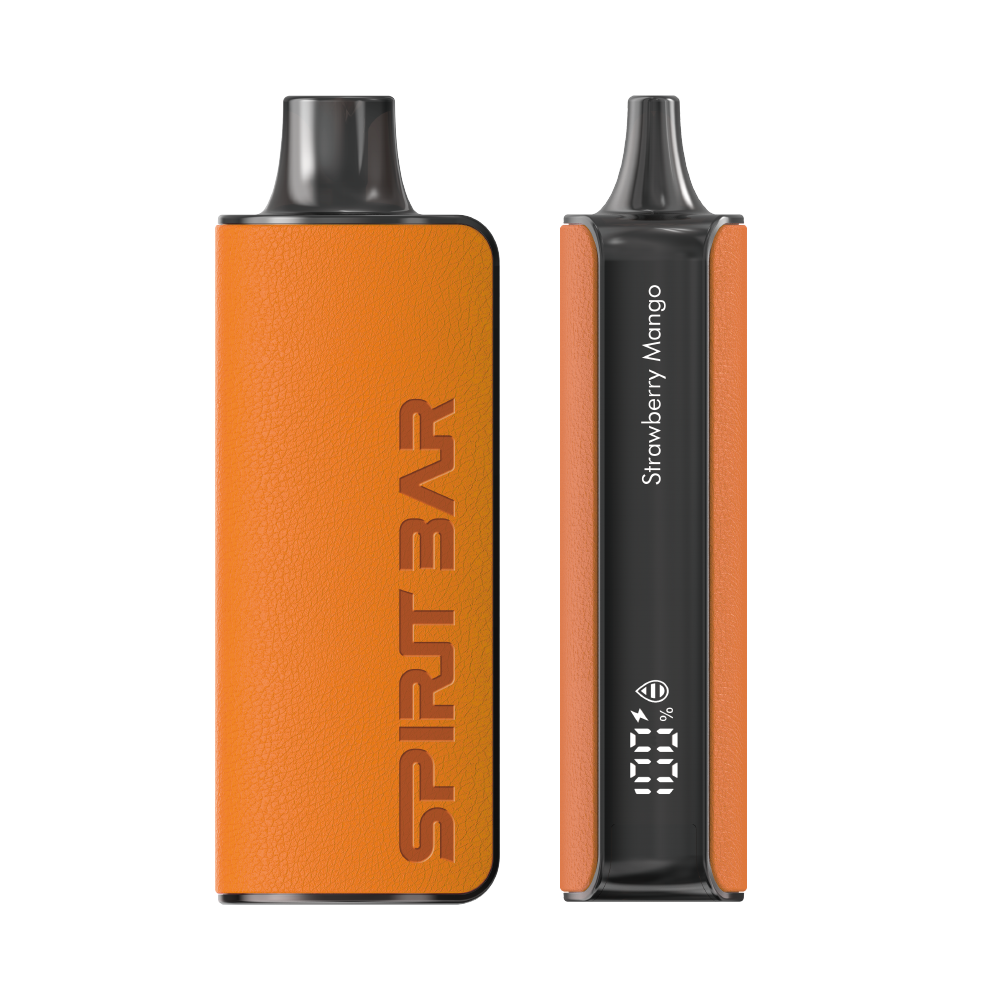Can Vaping Materials Be Recycled? A Friendly Guide to Sustainable Vaping
Are you wondering if vaping materials can be recycled? With the increasing popularity of vaping, many people are concerned about the environmental impact of disposable e-cigarettes and other vaping products. Unfortunately, the answer to whether or not vaping materials can be recycled is not a simple one.
While some components of vaping devices, such as the plastic casing and packaging, can be recycled, the batteries and other electronic components cannot. These materials contain toxic chemicals and heavy metals that can be harmful to the environment if not disposed of properly. Additionally, many vaping products are designed to be disposable and cannot be disassembled for recycling. As a result, many communities are struggling to find safe and effective ways to dispose of these materials.
Understanding Vaping Materials
https://www.youtube.com/watch?v=VNOJkW4Up8E&embed=true
If you’re wondering whether vaping materials can be recycled, it’s important to first understand what makes up a vape. Vaping devices are made up of various components, and the materials used in these components can vary widely.
Components of a Vape
Vaping devices typically consist of a battery, a heating element, and a tank or cartridge for holding the e-liquid. The battery is what powers the device, while the heating element is responsible for vaporizing the liquid. The tank or cartridge is where the liquid is stored and from which it is vaporized.
Materials Used in Vapes
The materials used in vaping devices can vary depending on the manufacturer and the specific device. However, some common materials include:
-
Plastic: Many vaping devices contain plastic components, such as the tank or cartridge. While some types of plastic can be recycled, others cannot. It’s important to check with your local recycling center to see what types of plastic they accept.
-
Metal: Vaping devices may also contain metal components, such as the heating element or battery. Some types of metal can be recycled, but others may require special handling due to their hazardous nature.
-
Glass: Some vaping devices use glass components, such as the tank or cartridge. Glass is generally considered recyclable, but it’s important to check with your local recycling center to see if they accept it.
-
E-liquid: The liquid used in vaping devices typically contains a mixture of propylene glycol, vegetable glycerin, flavorings, and nicotine. While some of these ingredients may be recyclable, the liquid as a whole is not.
Overall, while some components of vaping devices can be recycled, others may require special handling or may not be recyclable at all. It’s important to check with your local recycling center to see what types of materials they accept and how to properly dispose of any materials that cannot be recycled.
SPIRITBAR Katana BP10000
- Slender, leather-textured body reminiscent of a katana handle for an authentic samurai feel
- Unique samurai-inspired e-liquid flavor - fruity yet not too sweet, with a luxurious, elegant aroma
- Powerful 650mAh rechargeable battery for extended vaping time
- Large 18ml e-liquid capacity and 10,000 puff capacity
- Advanced mesh coil and e-liquid & power display screens for optimal vaping experience
The special juice captures the essence of the samurai spirit with its rich, smoothly pulsating flavor that brings new satisfaction with every puff. The device's slender, leather-textured design evokes the grip of a samurai's katana, making this product a perfect choice for beginner vapors.
Recycling Basics
https://www.youtube.com/watch?v=9ZieDDbxMhY&embed=true
When it comes to recycling vaping materials, there are some basics you need to know. This section will cover what can be recycled and the challenges in recycling.
What Can Be Recycled?
Not all vaping materials can be recycled, but there are some parts that can. Here is a breakdown of what can be recycled:
| Material | Can it be recycled? |
|---|---|
| Glass bottles | Yes |
| Metal parts | Yes |
| Plastic parts | Depends on the recycling program |
It’s important to note that not all recycling programs accept plastic parts from vaping materials. However, some programs do, so it’s worth checking with your local recycling center to see if they accept them.
Challenges in Recycling
One of the biggest challenges in recycling vaping materials is the fact that they often contain hazardous waste. This can include nicotine, lithium batteries, and other metals.
SPIRITBAR Jack’s Flask 9000 Puffs
- Stylish pirate flask-shaped body providing an exciting vaping experience
- Delivering up to 9000 puffs per device
- 20ml e-liquid capacity with 50mg nicotine strength for satisfying throat hit
- Specialized pirate-themed e-juice flavors for rich, swirling taste
- Premium mesh coil optimizes flavor profile for maximum vaping enjoyment
This disposable vape captures the daring spirit of the high seas with its flask styling and signature pirate e-juice flavors. The extraordinary battery life provides 9000 indulgent puffs for extended vaping pleasure. Live boldly and freely with the Jack's Flask - a legendary vaping experience fit for a pirate's adventures.
Another challenge is that many vaping materials are disposable, which means they are not designed to be reused. This makes it difficult to separate the parts for recycling.
Additionally, some vaping materials are made up of multiple materials, which makes them difficult to recycle. For example, some cartridges may contain plastic, metal, and glass components, which would need to be separated before they can be recycled.
Overall, recycling vaping materials can be challenging, but it’s important to do what we can to reduce waste and protect the environment.
Vaping Materials and Recycling
Vaping has become a popular alternative to traditional smoking in recent years. However, the rise in popularity of vaping has led to concerns about the impact of vaping materials on the environment. In this section, we will explore the recyclability of vaping materials and existing recycling programs for vapes.
Recyclability of Vaping Materials
Vaping materials, such as e-cigarettes and their components, contain a variety of materials that can be difficult to recycle. For example, e-cigarettes contain lithium-ion batteries, which can be harmful to the environment if not disposed of properly. Additionally, the cartridges used in e-cigarettes are made of plastic and can be difficult to recycle due to their small size.
However, some companies are working to make their vaping products more environmentally friendly. For example, some e-cigarette companies are now producing refillable cartridges, which can reduce waste and make it easier to recycle the cartridges.
Existing Recycling Programs for Vapes
While recycling programs for vaping materials are still in their infancy, some companies are taking steps to make recycling easier for their customers. For example, some e-cigarette companies have partnered with recycling programs that allow customers to send in their used cartridges for recycling. These programs typically provide customers with a prepaid shipping label, making it easy to send in their used cartridges for recycling.
SPIRITBAR Katana BP10000
- Slender, leather-textured body reminiscent of a katana handle for an authentic samurai feel
- Unique samurai-inspired e-liquid flavor - fruity yet not too sweet, with a luxurious, elegant aroma
- Powerful 650mAh rechargeable battery for extended vaping time
- Large 18ml e-liquid capacity and 10,000 puff capacity
- Advanced mesh coil and e-liquid & power display screens for optimal vaping experience
The special juice captures the essence of the samurai spirit with its rich, smoothly pulsating flavor that brings new satisfaction with every puff. The device's slender, leather-textured design evokes the grip of a samurai's katana, making this product a perfect choice for beginner vapors.
In addition, some local recycling programs are starting to accept vaping materials for recycling. However, it is important to note that not all recycling programs accept vaping materials, so it is important to check with your local recycling program to see if they accept these materials.
Overall, while recycling programs for vaping materials are still developing, there are steps that can be taken to reduce the environmental impact of vaping. By using refillable cartridges and participating in recycling programs, you can help reduce the amount of waste generated by vaping materials.
Environmental Impact of Vaping Materials
Vaping has become a popular alternative to smoking cigarettes, but it has also raised concerns about its environmental impact. The materials used in vaping devices, such as e-cigarettes, pods, and disposable vapes, generate waste that is difficult to recycle or dispose of properly.
Waste Generated by Vapes
One of the biggest issues with vaping materials is the waste they generate. Many vaping devices use disposable components, such as cartridges and pods, that cannot be recycled easily. The plastic and metal components of these devices end up in landfills, where they can take hundreds of years to decompose. Additionally, the lithium-ion batteries used in some vaping devices are hazardous and can cause fires if not disposed of properly.
Potential Hazards of Improper Disposal
Improper disposal of vaping materials can also pose potential hazards to the environment and wildlife. E-cigarette waste introduces plastic, nicotine salts, heavy metals, lead, mercury, and flammable lithium-ion batteries into waterways, soil, and to wildlife. Unlike cigarette butts, e-cigarette waste won’t biodegrade even under severe conditions. Vaping materials that are not disposed of properly can also be harmful to humans, especially those who work in waste management and recycling facilities.
It is important to dispose of vaping materials properly to minimize their environmental impact. Some communities are experimenting with new ways to safely toss vapes, which contain hazardous materials like nicotine and lithium. Vaping companies should also take responsibility for the environmental impact of their products and work towards creating more sustainable and recyclable options.
SPIRITBAR Jack’s Flask 9000 Puffs
- Stylish pirate flask-shaped body providing an exciting vaping experience
- Delivering up to 9000 puffs per device
- 20ml e-liquid capacity with 50mg nicotine strength for satisfying throat hit
- Specialized pirate-themed e-juice flavors for rich, swirling taste
- Premium mesh coil optimizes flavor profile for maximum vaping enjoyment
This disposable vape captures the daring spirit of the high seas with its flask styling and signature pirate e-juice flavors. The extraordinary battery life provides 9000 indulgent puffs for extended vaping pleasure. Live boldly and freely with the Jack's Flask - a legendary vaping experience fit for a pirate's adventures.
Future Directions
As the vaping industry continues to grow, it is important to consider the future of vape recycling. Here are two potential areas of focus for future developments in this field.
Innovations in Vape Design for Recyclability
One potential solution to the problem of unrecyclable vape materials is to design vapes with recyclability in mind. Some companies are already taking steps in this direction. For example, some vape manufacturers are experimenting with biodegradable materials for their pods and cartridges. Others are working on ways to make their batteries more easily recyclable.
In addition to these efforts, there is also room for innovation in the design of vape products themselves. For example, some companies are exploring the use of refillable vape pods that can be reused multiple times. This could significantly reduce the amount of waste generated by vaping.
Policy Recommendations for Vape Recycling
Another potential solution is to implement policies that encourage or require vape recycling. For example, some states have implemented e-waste recycling programs that include vape products. These programs provide a convenient way for consumers to dispose of their used vapes in an environmentally friendly way.
Another potential policy solution is to require vape manufacturers to take responsibility for the end-of-life management of their products. This could include implementing take-back programs or providing incentives for consumers to recycle their used vapes.
Overall, there is still much work to be done in the field of vape recycling. However, by continuing to explore new innovations and policies, we can help ensure that the growth of the vaping industry does not come at the expense of the environment.


